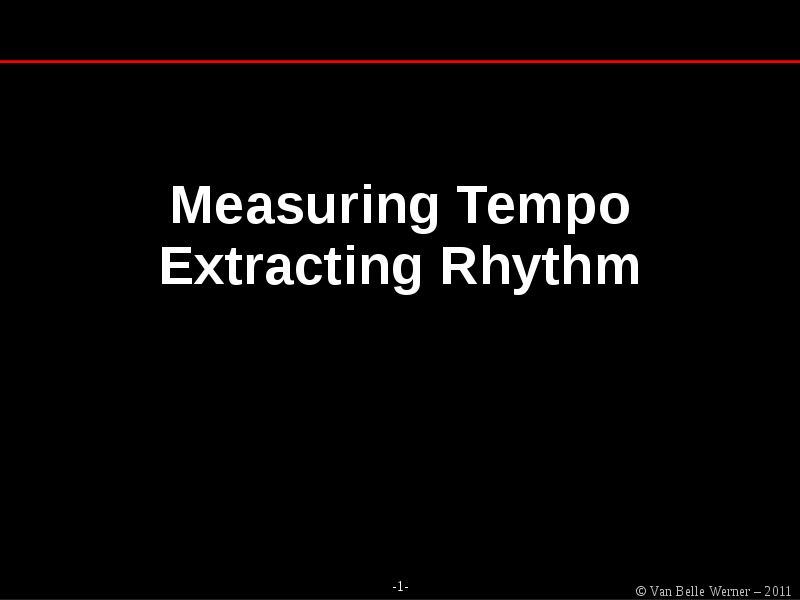| Home | Papers | Reports | Projects | Code Fragments | Dissertations | Presentations | Posters | Proposals | Lectures given | Course notes |
Measuring Tempo, Extracting Rhythm & Composition
Werner Van Belle1 - werner@yellowcouch.org, werner.van.belle@gmail.com
1- Yellowcouch;
Abstract : This talk explains how the tempo of music can accurately be measured and how it can be used afterwards to extract rhythmical information and composition properties. These can further be used to find similar songs, generate synthetic rhythms and mix music. The peaks/valleys in autodifference/autocorrelation plots correspond potentially to the perceived tempo of music. Consequently, they can be used to measure the tempo of music. The problem with these techniques is that reported tempos might be off by a multiplication factor. This presentation discusses removal of such biases as to flatten out the autodifference/autocorrelation plots. Secondly, we discuss how the problem of tempo-harmonics (120 BPM reported as 90 BPM for instance) can be reduced from a multi-class classification problem to a binary classification problem. The resulting tempo information makes it further possible to extract rhythm and composition extraction from music.
Keywords:
tempo extraction, rhythm extraction, bpm counter, bpmdj
Reference:
Werner Van Belle; Measuring Tempo, Extracting Rhythm & Composition; Presented at Chaos Communication Camp 2011; Finowfurt; Germany; August 2011
See also:
Presentation given at the Chaos Communication Camp
BpmDj homepage
A number of strategies to speed up tempo measurement
Biasremoval from BPM Counters and an argument for the use of Measures per Minute instead of Beats per Minute [article | slides]
Basic Autodifferencing Explained











































































| http://werner.yellowcouch.org/ werner@yellowcouch.org |  |